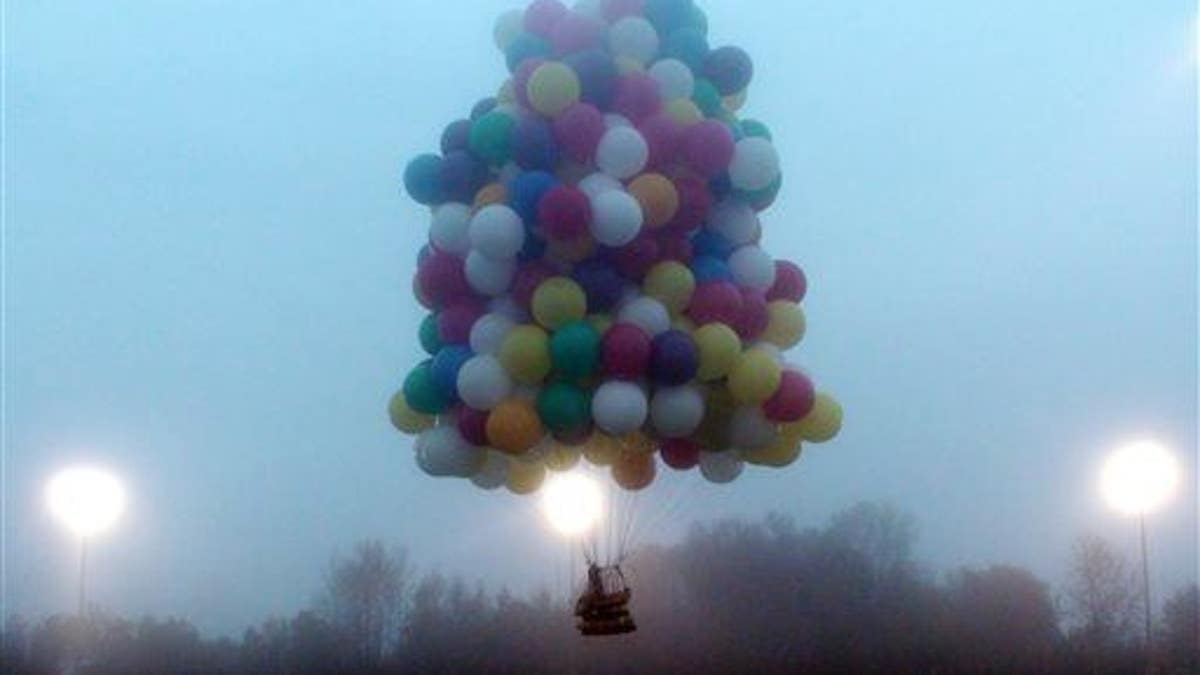
In this photo provided by Mark McBreairty, a balloon cluster carrying Jonathan Trappe lifts off from Caribou, Maine, Thursday, Sept. 12, 2013. (AP Photo/Mark McBreairty)
Don't mourn the loss of your humorously high-pitched voices quite yet. Despite years of warnings from scientists that Earth's supply of helium is quickly running out, the results of a study announced Wednesday in Prague show there could still be large deposits of the element hidden underground, the Guardian reports.
Helium, as important to the nuclear industry as the birthday party industry, is essential to everything from MRIs to the Large Hadron Collider, according to Phys.org.
But as PhD student Diveena Danabalan explains, "Helium is the second lightest element in nature, it is so light that it leaks away into space." That makes it a finite resource, and most of the helium we've used so far has come as a byproduct of natural gas extraction.
But "no one could really pinpont where the next deposit would appear," says Danabalan. That problem that led researchers to look at 22 natural gas wells in the United States and Canada.
According to Phys.org, whenever helium was found in those wells, so were neon isotope tracers, a chemical almost always associated with groundwater. "This, we realized, meant that helium has to have been dissolved in groundwater and then transported throughout the US and Canada until it met a geological structure that drew it back out of the water," Danabalan tells the Guardian.
Knowing how and why helium got into natural gas reservoirs means scientists have a starting point in terms of where to look to find new helium deposits.
Now, they just have to actually find them. (Want to know what we're wasting our precious helium on? Read about the man who used it fly his chair over Canada.)
This article originally appeared on Newser: Earth May Have More Helium Left Than Thought
More From Newser
